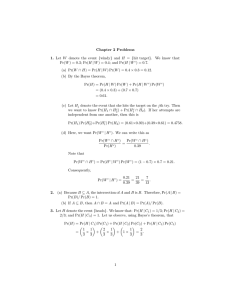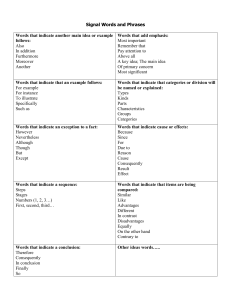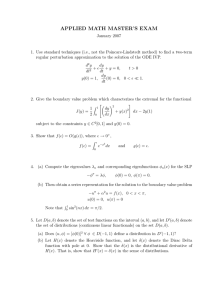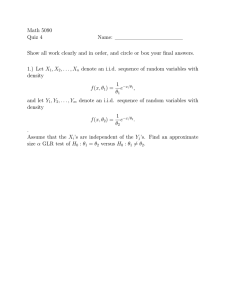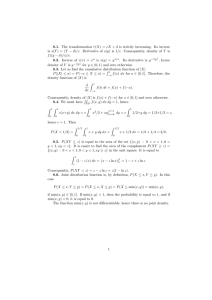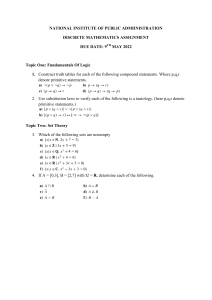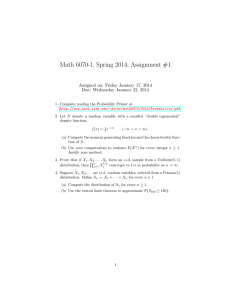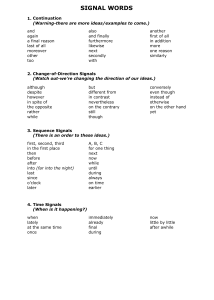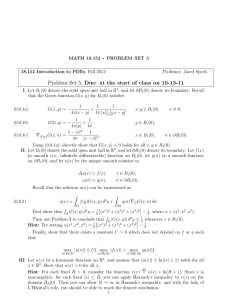p. 67 √ N .
advertisement
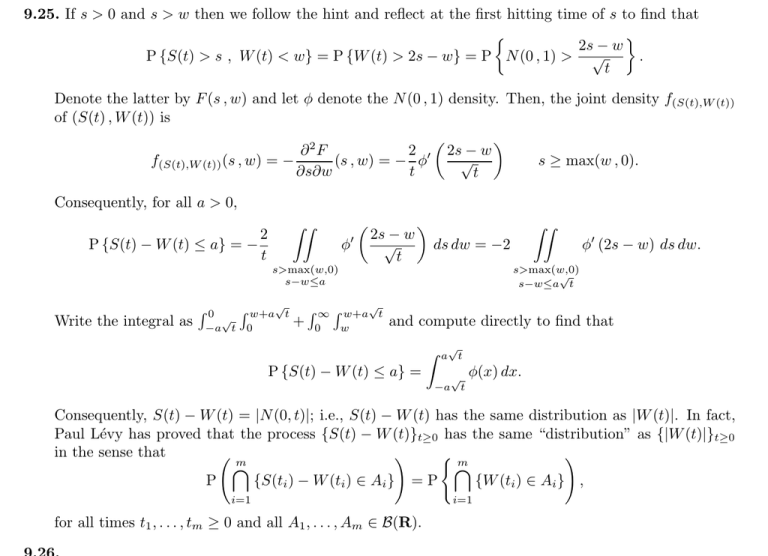
9.25. If s > 0 and s > w then we follow the hint and reflect at the first hitting time of s to find that
!
"
2s − w
P {S(t) > s , W (t) < w} = P {W (t) > 2s − w} = P N (0 , 1) > √
.
t
Denote the latter by F (s , w) and let φ denote the N (0 , 1) density. Then, the joint density f(S(t),W (t))
of (S(t) , W (t)) is
#
$
∂2F
2 ! 2s − w
√
f(S(t),W (t)) (s , w) = −
(s , w) = − φ
s ≥ max(w , 0).
∂s∂w
t
t
Consequently, for all a > 0,
%%
2
P {S(t) − W (t) ≤ a} = −
t
!
φ
s>max(w,0)
s−w≤a
Write the integral as
& w+a√t
√
−a t 0
&0
+
#
2s − w
√
t
& ∞ & w+a√t
0
w
$
ds dw = −2
%%
φ! (2s − w) ds dw.
s>max(w,0)
√
s−w≤a t
and compute directly to find that
P {S(t) − W (t) ≤ a} =
%
√
a t
√
−a t
φ(x) dx.
Consequently, S(t) − W (t) = |N (0, t)|; i.e., S(t) − W (t) has the same distribution as |W (t)|. In fact,
Paul Lévy has proved that the process {S(t) − W (t)}t≥0 has the same “distribution” as {|W (t)|}t≥0
in the sense that
'm
)
*m
)
(
(
P
{S(ti ) − W (ti ) ∈ Ai } = P
{W (ti ) ∈ Ai } ,
i=1
for all times t1 , . . . , tm ≥ 0 and all A1 , . . . , Am ∈ B(R).
i=1
